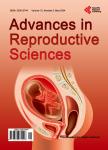Factor Structure and Measurement Invariance of the Japanese Version of the Mother-to-Infant Bonding Scale
Factor Structure and Measurement Invariance of the Japanese Version of the Mother-to-Infant Bonding Scale作者机构:Graduate School of Nursing Science St. Luke’s International University Tokyo Japan Toubi Branch Bizen Public Health Center Okayama Japan Department of Obstetrics and Gynaecology National Hospital Organization Okayama Medical Centre Okayama Japan Unit for Mental Health Promotion Research Center for Social Science & Medicine Tokyo Metropolitan Institute of Medical Science Tokyo Japan Kitamura Institute of Mental Health Tokyo Tokyo Japan Kitamura KOKORO Clinic Mental Health Tokyo Japan T. and F. Kitamura Foundation for Studies and Skill Advancement in Mental Health Tokyo Japan Department of Psychiatry Graduate School of Medicine Nagoya University Nagoya Japan
出 版 物:《Advances in Reproductive Sciences》 (生殖科学(英文))
年 卷 期:2023年第11卷第4期
页 面:159-170页
学科分类:07[理学] 0701[理学-数学] 070101[理学-基础数学]
主 题:Bonding Disorders Mother-to-Infant Bonding Scale Factor Analysis Measurement Invariance
摘 要:Background: Bonding disorders affect the growth and development of infants. In Japan, the Japanese version of the Mother-to-Infant Bonding Scale (MIBS-J) is widely used for early detection of bonding disorders. Repeated use of a questionnaire has problems of reduced validity. In order to correctly detect bonding disorders at multiple time points, it is necessary to confirm the measurement invariance of the scale. Baba et al. reported that invariance of the MIBS-J factor structure could only be obtained by abridging the scale into three items. Purpose: The aim of this study was to 1) confirm the factor structure and measurement invariance of the MIBS-J between two measurement times and 2) to examine factors that can be used without being affected by measurement time in order to identify item that contribute to measure met invariance. Methods: We analysed the data of 1049 and 878 mothers with a neonate collected in two waves: 5 days (Wave 1) and 1 month postpartum (Wave 2). Exploratory and confirmatory factor analyses were conducted on the data randomly divided into two groups in each wave. Results: The three-item model (MIBS-J items 1, 6, and 8) was most accepted. Measurement invariance and structural invariance were confirmed in the model. This was consistent with Baba et al.’s model. Conclusion: The three MIBS-J items showed measurement invariance and structural invariance in Japanese mothers during 1 month postpartum.



